This post was written mostly for my out of state and international readers: my fellow Minnesotans are probably familiar with most of the content here.
The Minnesota State Fair runs for 12 days in late August and early September, finishing on Labor Day. It is the largest fair in the country by average daily attendance: The Texas state fair has higher overall attendance, but it runs for twice as long, 24 days. Over the 12 days, almost 2 million people paid for entry. The population of Minnesota is 5.7 million (though of course there were also out of state and international visitors).
State fairs are mostly agricultural. For my French readers, the big state fairs are basically much larger versions of the Salon d’Agriculture. Taking place at the end of the summer, they are the venue for statewide competitions for things like the best specimen for each breed of cattle, horse, sheep, goat, pig, chicken, and rabbit. Here is a photo from a dairy goat competition that the girls and I saw a number of years ago, just after we had been in France for several weeks making goat cheese on an organic family farm. We were shocked by the massive sizes of their udders that were easily three times bigger than the goats we worked with. Their udders were so huge that the poor goats walked with splayed back legs.
The winner in each category gets a blue ribbon, red is for second place, white for third, etc. There are also ribbon competitions for arts and crafts, fruits and vegetables, baked goods (cookies, pies, cakes, and so on), jams and jellies, and maple syrup - plus, I’m sure, many other categories that I have forgotten.
One popular stop for fairgoers is the exhibit for the largest pumpkin (courge): this year’s winner weighs 1,808 pounds (820 kilos).
Even more popular, so much so that you have to wait in line just to get into the room, is the annual “crop art” competition. These are works of art made entirely with seeds, each individual seed glued to the canvas. Many of the entries are Minnesota related inside jokes that don’t translate well, but here is one winner that gives you a sense of the work and skill involved.
The fairgrounds occupy a huge area on the border between the cities of Minneapolis and St. Paul: 322 acres (130 hectares) in a rough square that is approximately .75 miles x .75 miles (1.2 x 1.2 kilometers). It takes a long time to walk from one side to the other - so long that there are special chairlifts people can take to more easily and quickly cross those distances. It really is too big to see everything in one day.
The fair is always crowded: this year I went on a Tuesday, hoping for lighter crowds, but it still felt like an incredible mass of humanity.
There is a huge selection of both antique agricultural equipment (in working condition) and hulking new models on display for farmers. Huge buildings demonstrate new products for the home and garden. There is a large section of rides (manèges) and games: throwing a ring around something, popping balloons with darts, and so on. I loved the rides when I was young, especially those with that combined height and being spun upside down, but now just one ride makes me feel sick for the rest of the day. I can still handle the Giant Slide though.
There are a lot of educational exhibits. For the sake of my students, always spend some time in the Eco Experience and Progress Center which features new technology (this year heat pumps were heavily featured) and family targeted lessons on sustainability. Here I am next to a massive (and heavy) model turd, an eye-catching draw for an exhibit on how water treatment systems work.
A key message of this particular outreach effort was telling as many people as possible that “flushable” wipes are most definitely not flushable. It’s worth noting that I have never seen these wipes purchased by (or marketed to) anyone in France except the parents of babies.
This year, the Eco Experience hosted a Tesla Cybertruck that I briefly sat inside just for the experience.
In an election year like this one, the political booths also get a lot of attention. The most talked about one this year was a “Never Walz” booth where people stood in line to spin a wheel filled with things that Minnesota Governor Tim Walz, now the Democratic nominee for Vice President, is accused of or blamed for. If the wheel lands on the small red area, the spinner wins a fan with Never Walz on it.
In sum, there is a lot happening at the fair. But despite all these offerings, the fair is most famous for its food: we will get to that in a few minutes, after a brief detour through dairy land.
Minnesota is well known for its dairy products. My dad was a dairy farmer and I lived on a dairy farm for the first six years of my life. I have fond memories of that time that are instantly brought back to life by the smells in the huge cattle barn: hay, straw, cows, and yes, a little manure. There are cow milking demonstrations and lessons among many other dairy promotions. The fair has an “All You Can Drink” fresh milk stand: for $3, you can come back and refill your cup all day long, with plain or chocolate milk.
One of the most iconic experiences at the fair is stopping by to see the Butter Princesses. Technically, they are Dairy Princesses, selected from throughout Minnesota over the course of the year with ten finalists coming to the state fair. To be eligible to enter the contest, the young woman (under age 24) or her family must be directly involved in dairy production in Minnesota. She must also “be a genuine user of dairy products and a passionate supporter of the dairy industry,” and “must not participate in or be associated with the sale of raw milk directly to consumers.”
Just before the fair starts, the winning Dairy Princess is crowned Princess Kay of the Milky Way. Over the course of the twelve day fair, each princess has her likeness carved into a 90 pound block of butter, which she then takes home with her when the fair is over. I’ve always wondered what she does with all that butter, especially with her face on it. The carving takes place in a refrigerated, rotating glass room and people love to watch. It really is an “only in Minnesota” experience.
And finally, the food. It really is impossible to do a comprehensive overview since there are approximately 1,600 unique offerings. Every year there are new fair foods (33 this year) unveiled ahead of time in the Star-Tribune newspaper and eagerly sought out by many passionate fairgoers.
I’m going to start with the most popular foods into three categories: deep fried, very sweet, and on a stick.
When it’s state fair time, people will deep fry anything. The most classic is the corn dog: a hot dog wiener wrapped in a sweetened cornmeal breading and deep fried. Its competitor is the pronto pup: here, the breading is made of pancake batter. The rivalry between the corn dog and the pronto pup was the theme of a crop art entry that is a good example of what I mentioned above as Minnesota-themed inside jokes.
This year the most talked about new fair food was deep fried ranch. “Ranch” is ranch dressing, a buttermilk (lait ribot) based sauce for salad seasoned with onion powder and dried herbs. Someone figured out how to freeze it wrapped in a pastry triangle and then deep fry it. I didn’t try this, but my daughter did and she sent me this photo. Ranch is on the bottom, served with a hot honey sauce. On top are ghost pepper cheese curds which she reported as disappointingly not spicy.
Other famous fried things include cheese curds (pieces of fresh cheese coated in batter and deep-fried), tater tots (fried shredded potatoes, shown below with cheese, bacon, and sour cream), deep-fried candy bars, deep fried Twinkies, and lots of donuts. The final photo below is deep-fried Oreo cookies.
Several of the deep-fried entries cross the line into the very sweet category, where you will also find cotton candy, ice cream, sno cones, and most famously, Sweet Martha’s chocolate chip cookies. There are always people standing in line here to purchase a bucket (which holds approximately 50) of warm-from-the-oven cookies.
Every year there are new and improbable foods “on a stick.” The corn dog was the original, but now you can get a pork chop on a stick, a big fat piece of bacon (see below) on a stick, pizza on a stick, pickles (deep fried or not) on a stick, a giant eggroll on a stick, and even hotdish on a stick.
Hotdish is the Minnesotan word for casserole (gratin) - an oven baked dish with a mix of ingredients in a cream sauce, often with a layer of cheese on top. Here the hot dish has been deconstructed, which they demonstrate with a helpful drawing. Photos below. Notice also the tongue-in-cheek reference to the fact that most Minnesotans have a very low spice tolerance. I know Minnesotans who think that black pepper and cooked garlic are “very spicy.”
Finally, this place doesn’t fit any of the categories but it is hugely popular, combining two things that Minnesotans love: ranch dressing and pickles.
The one thing I ate was a new food this year, but it didn’t really fit any of these categories. It was a bowl with hummus, Korean spiced pork, fresh pita, and yogurt with some tater tots - perhaps added to make it seem more like traditional fair food. It was fine, but not worth the $14 that it cost.
I would love to hear about other state fairs in the comments. I haven’t been to any other than the Minnesota one.
Feel free to share with friends. Subscribing is free and the more the merrier.
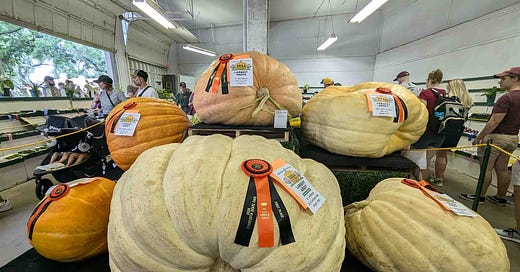


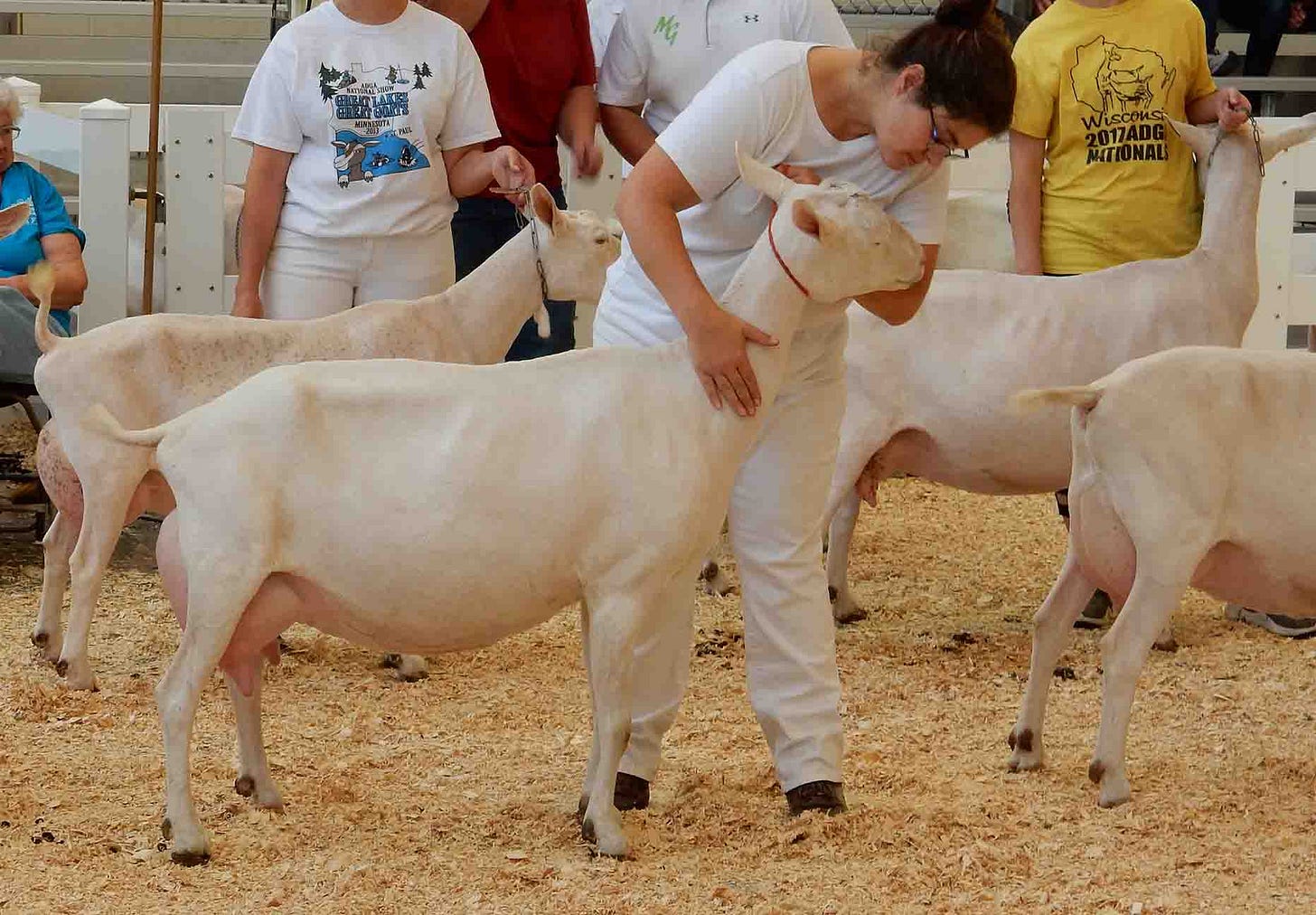

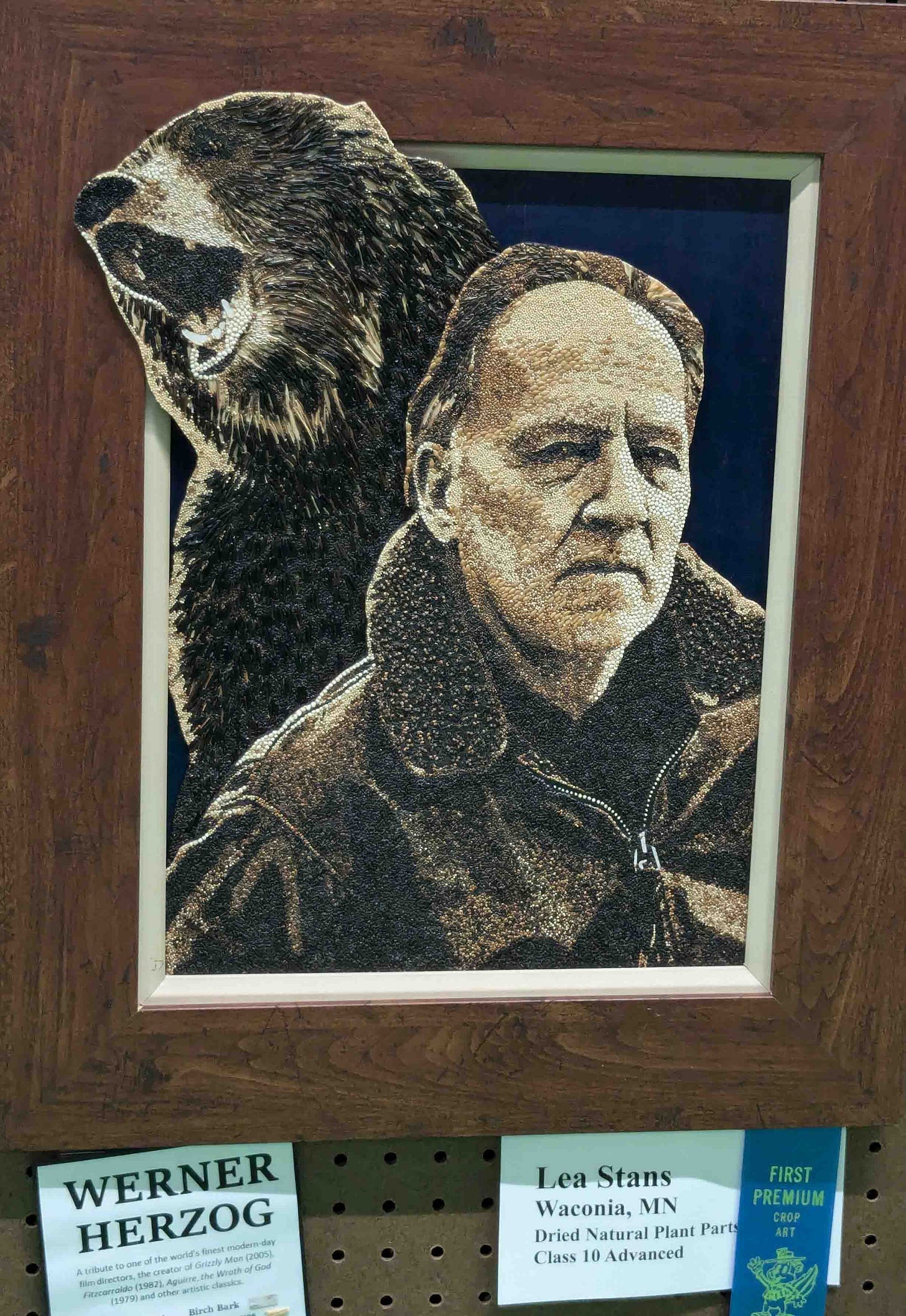
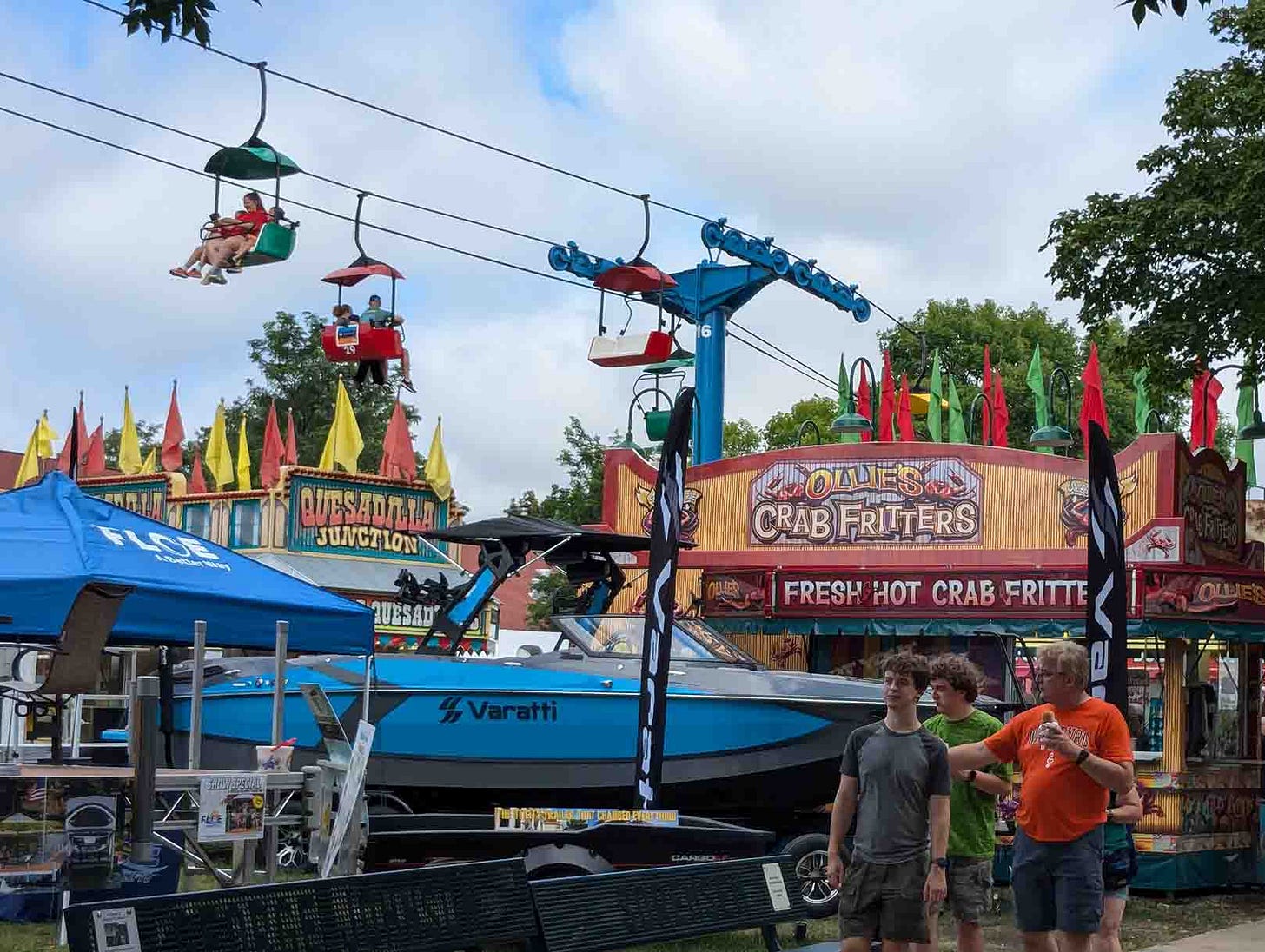
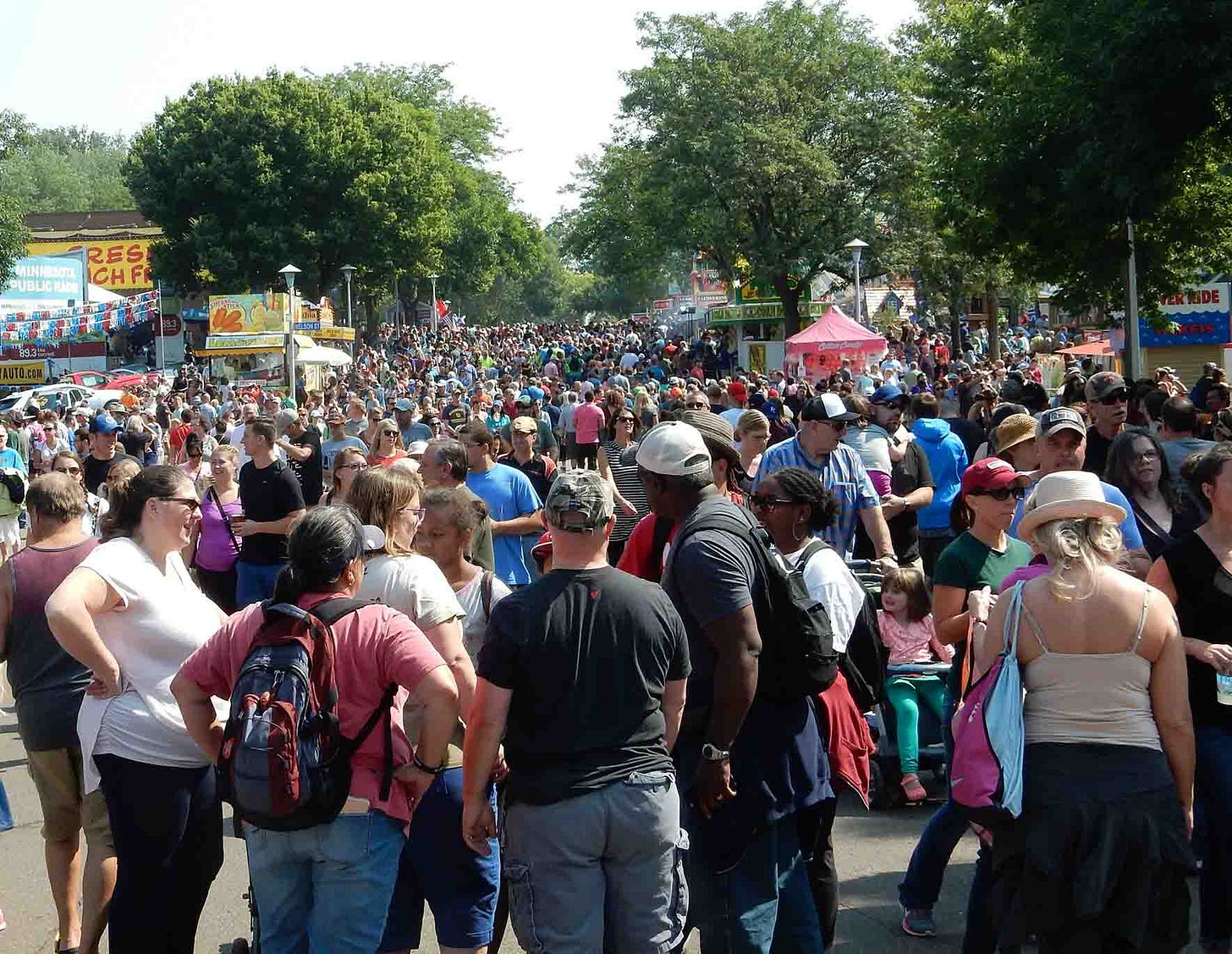
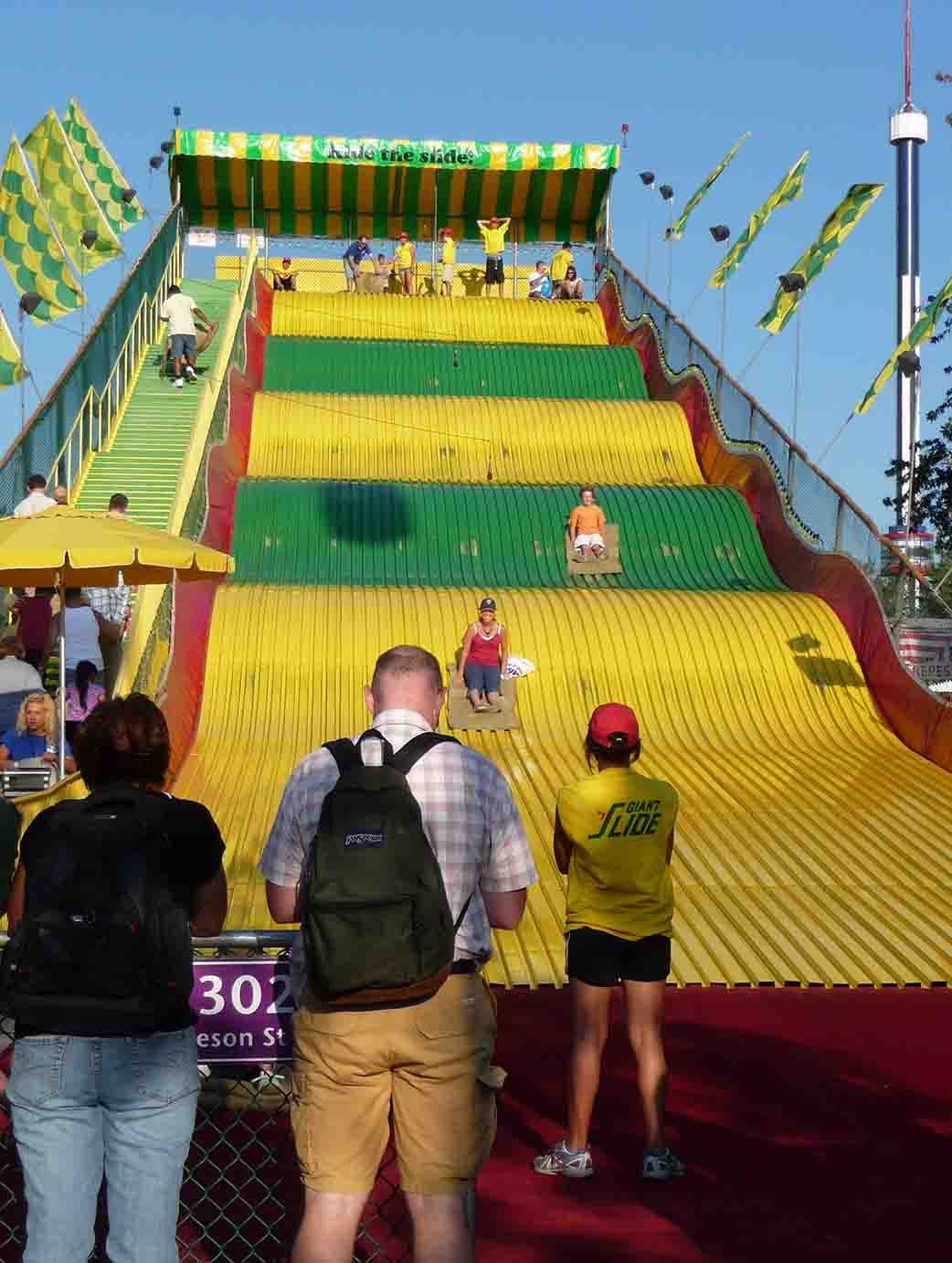
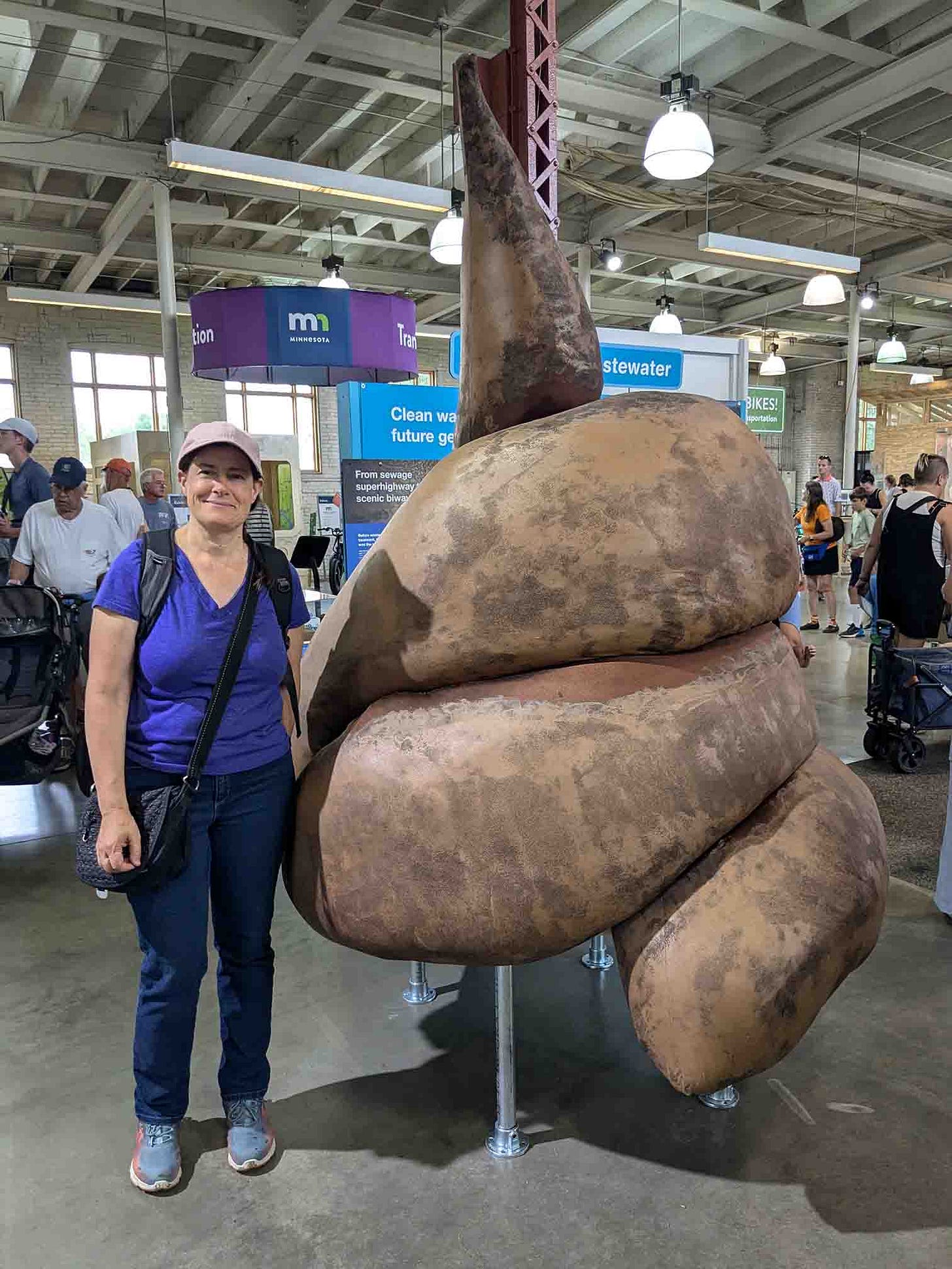
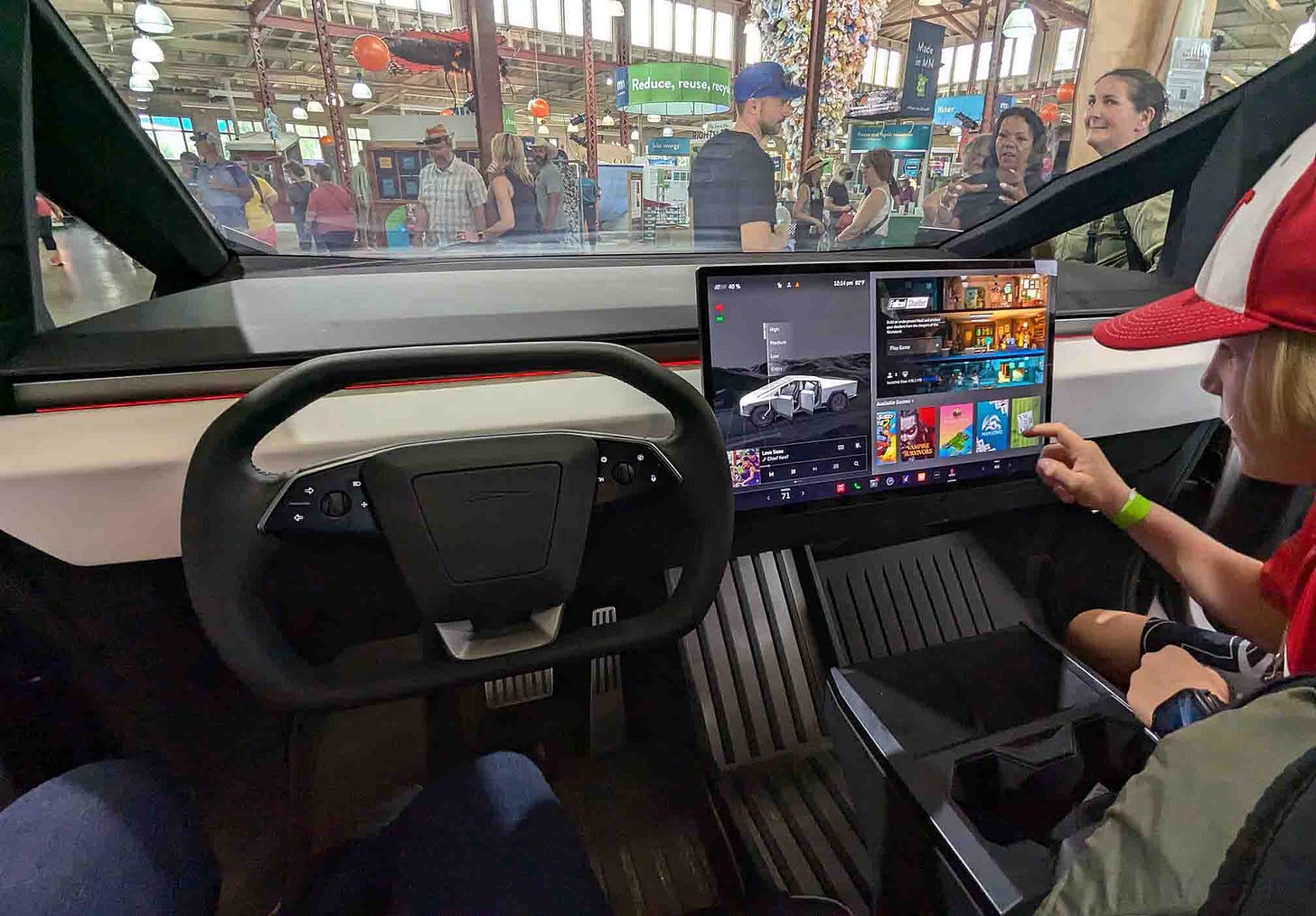
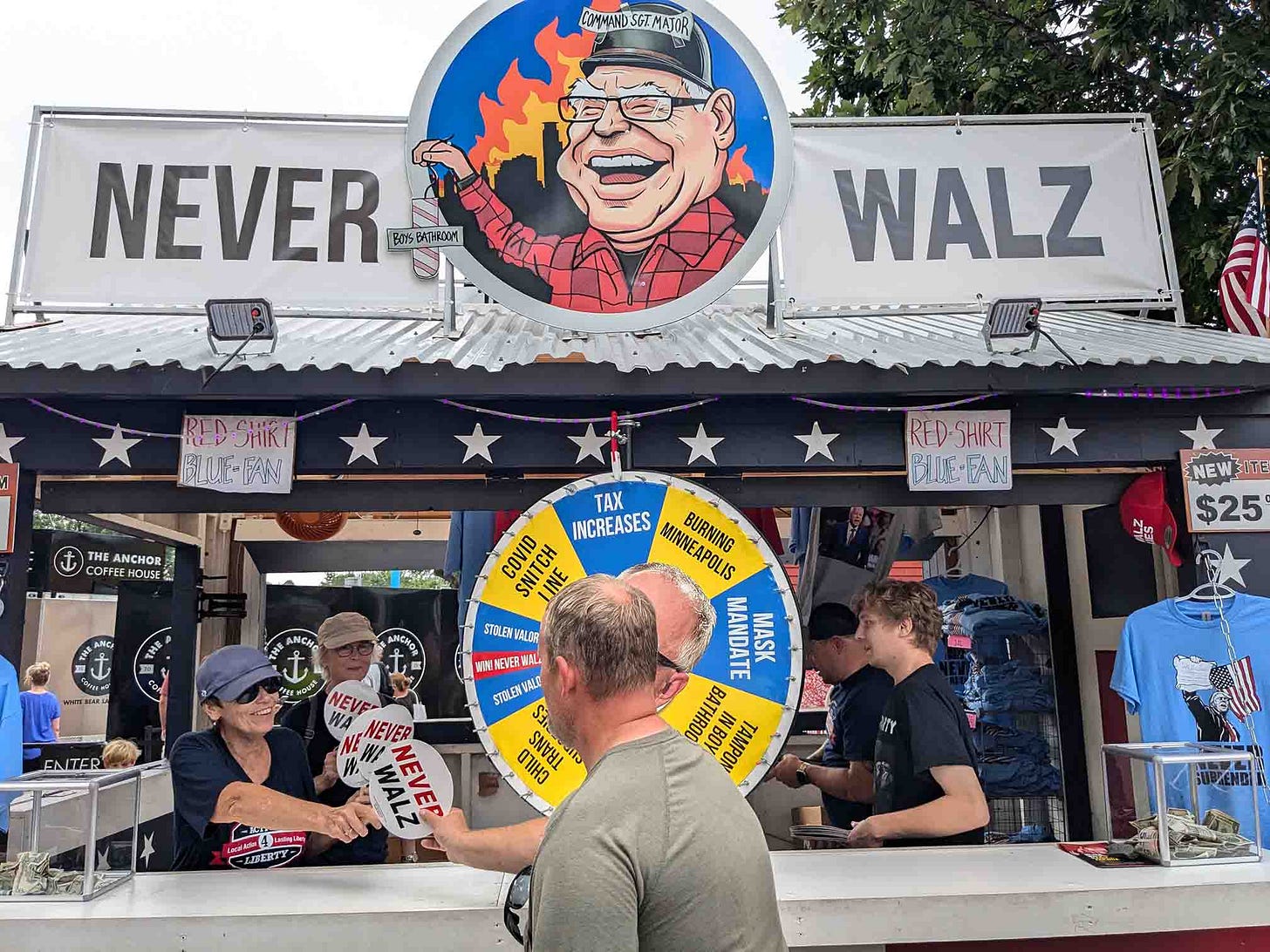
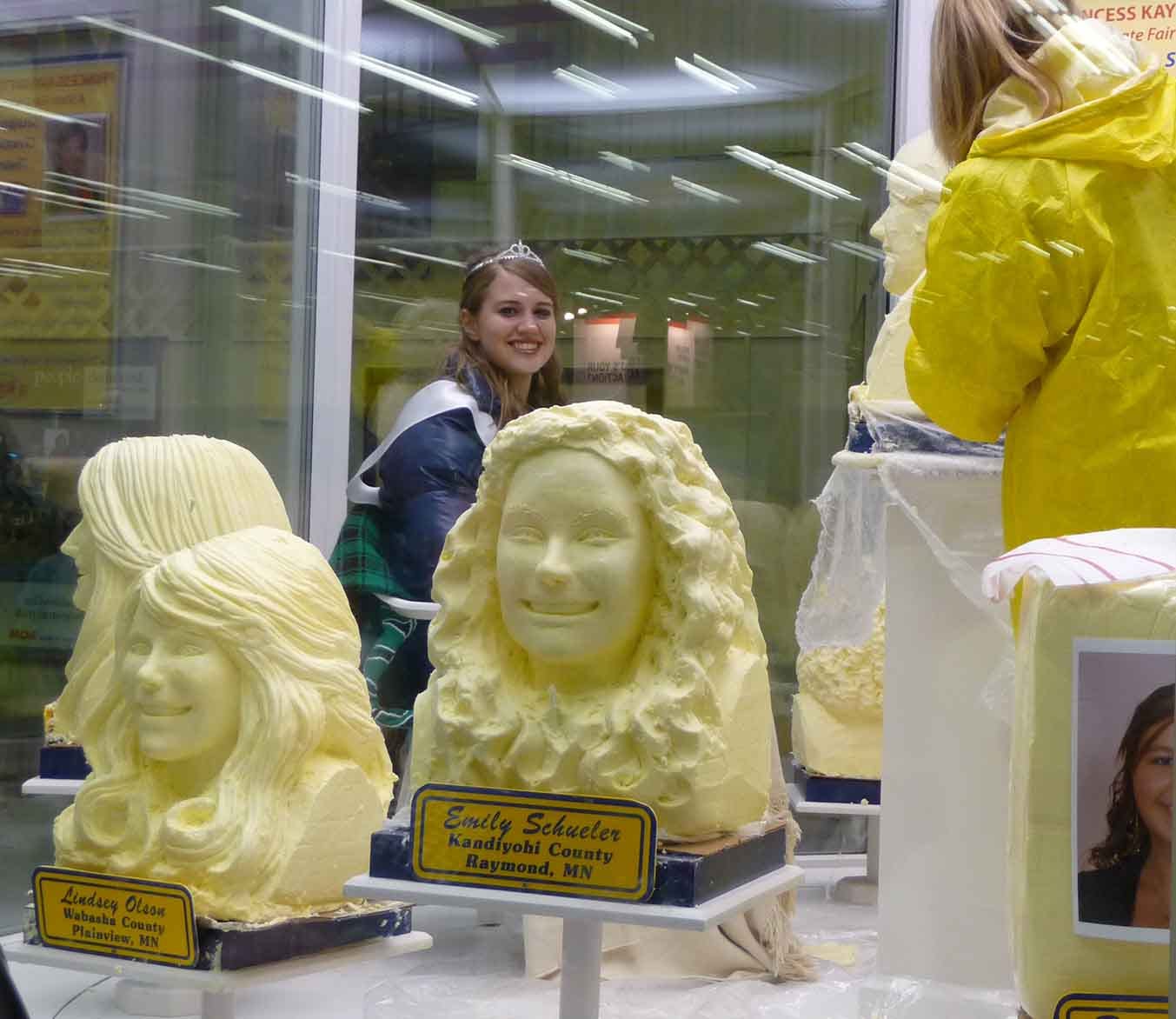

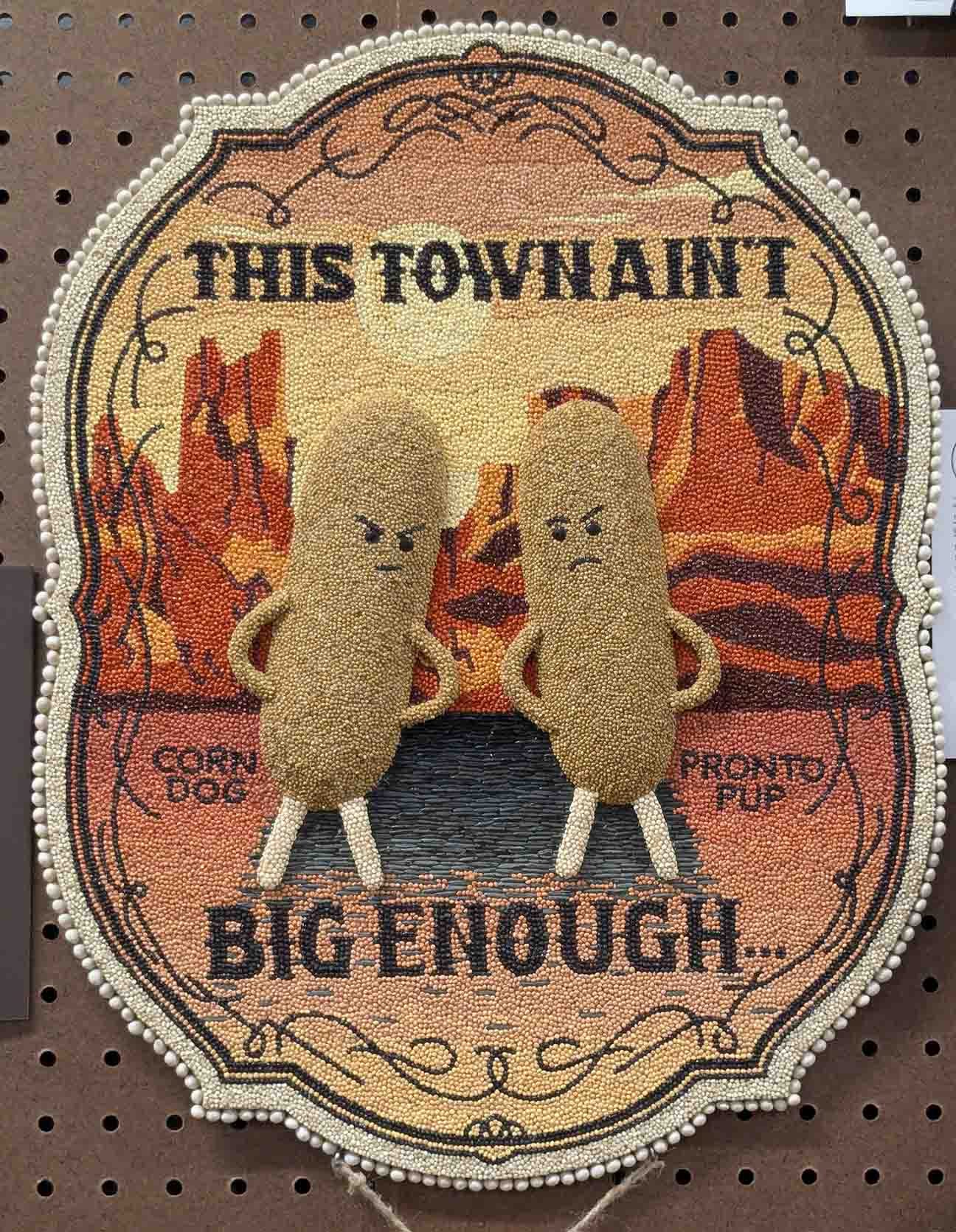
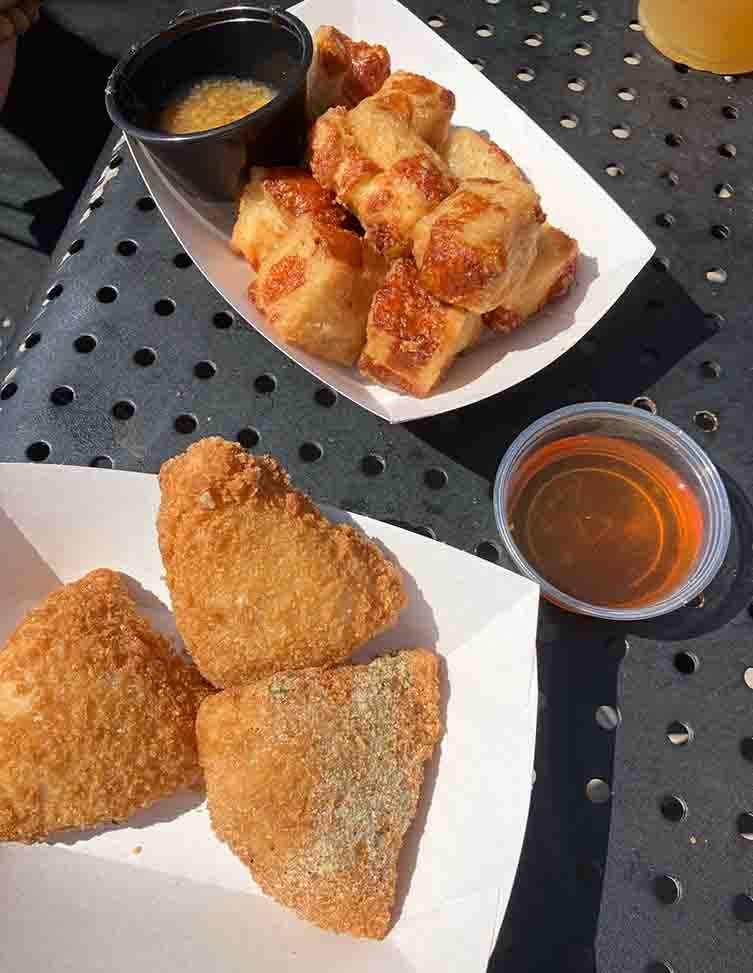
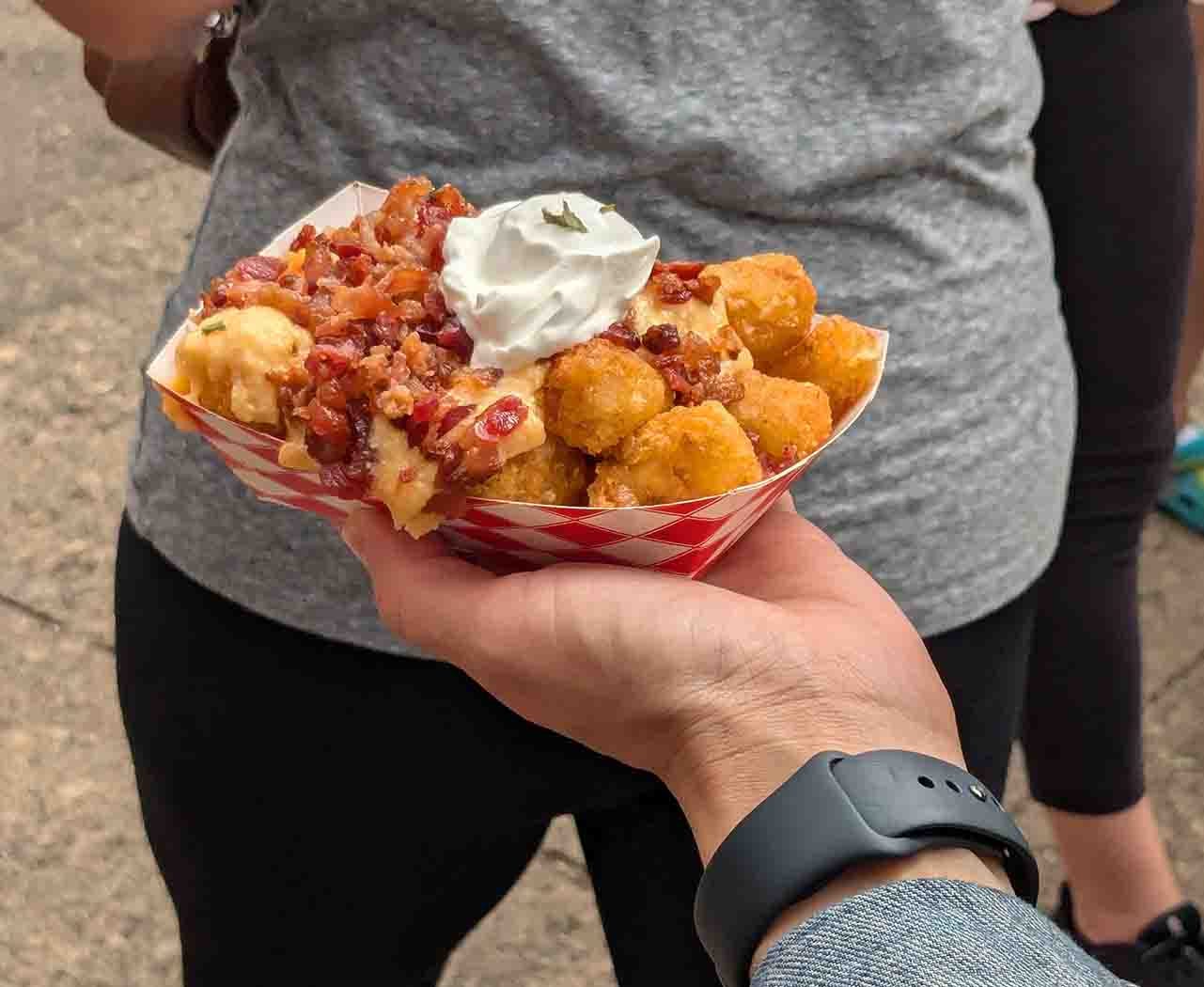
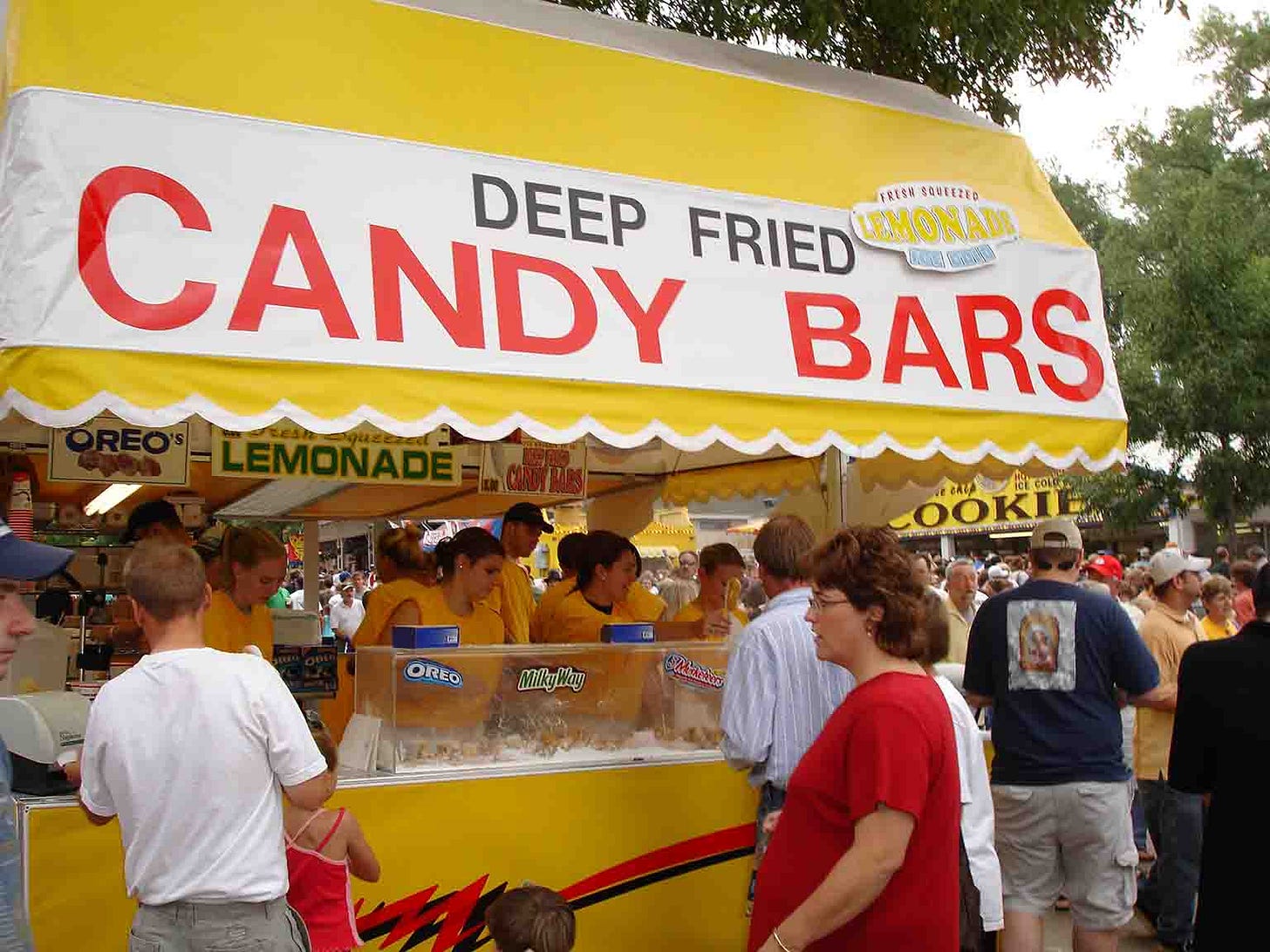
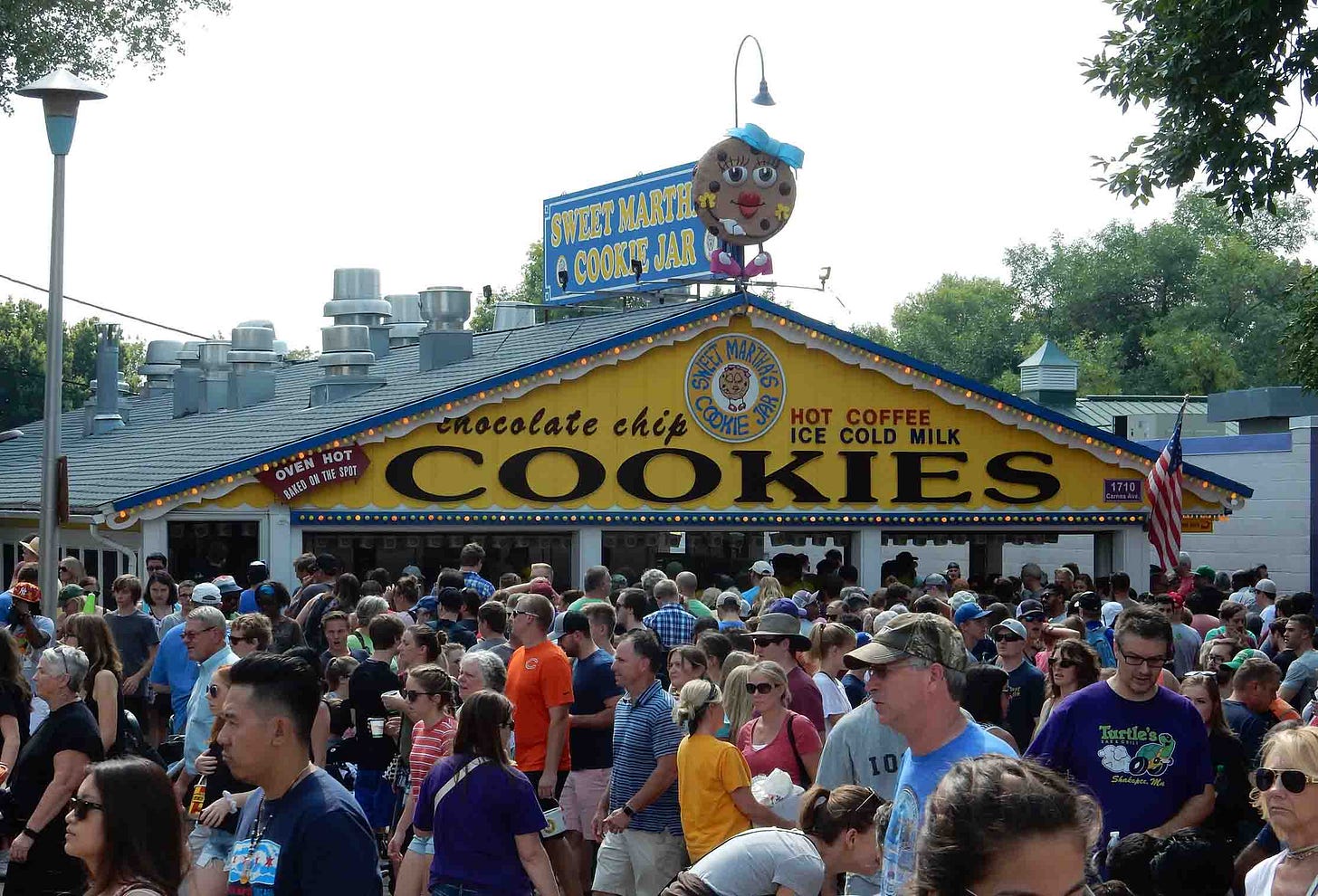

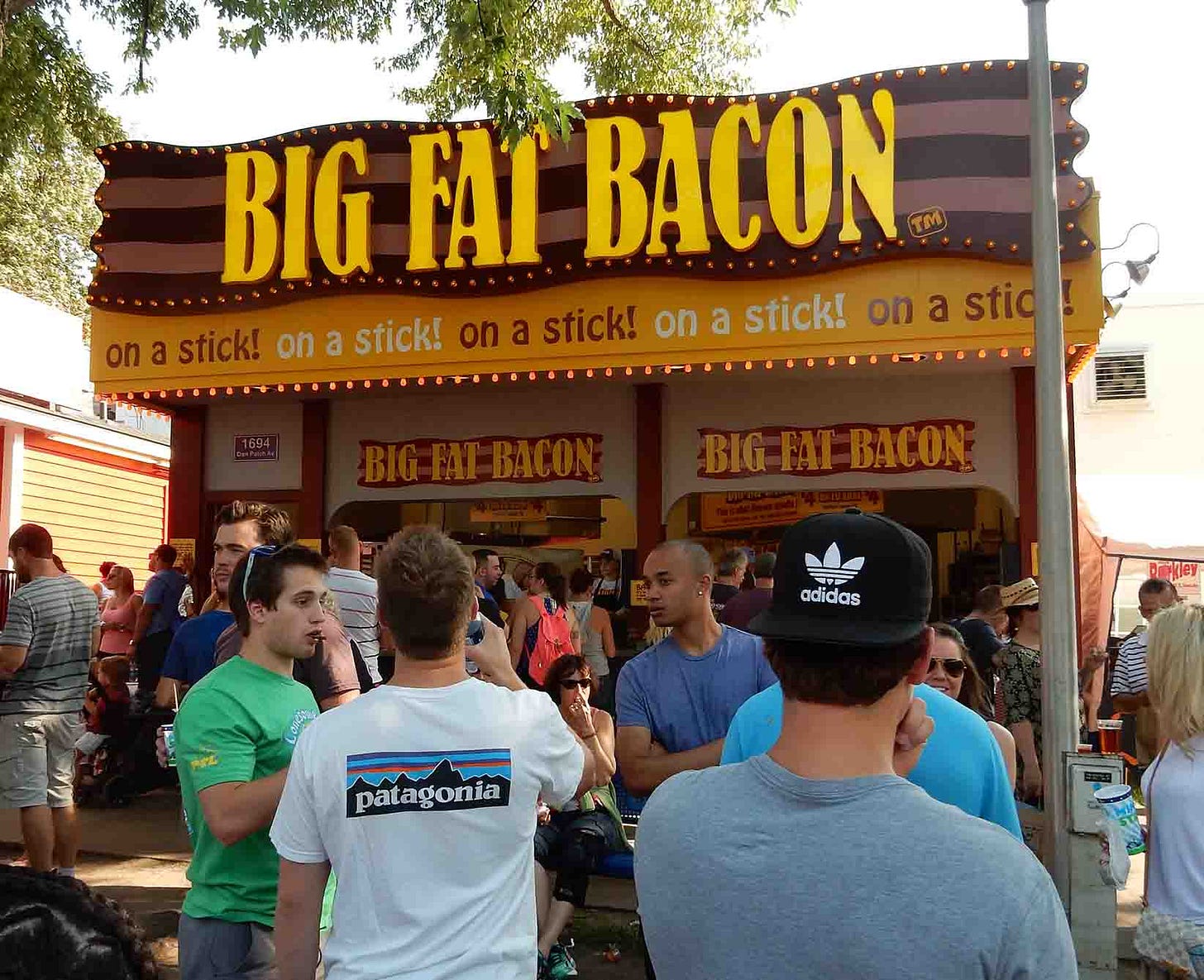
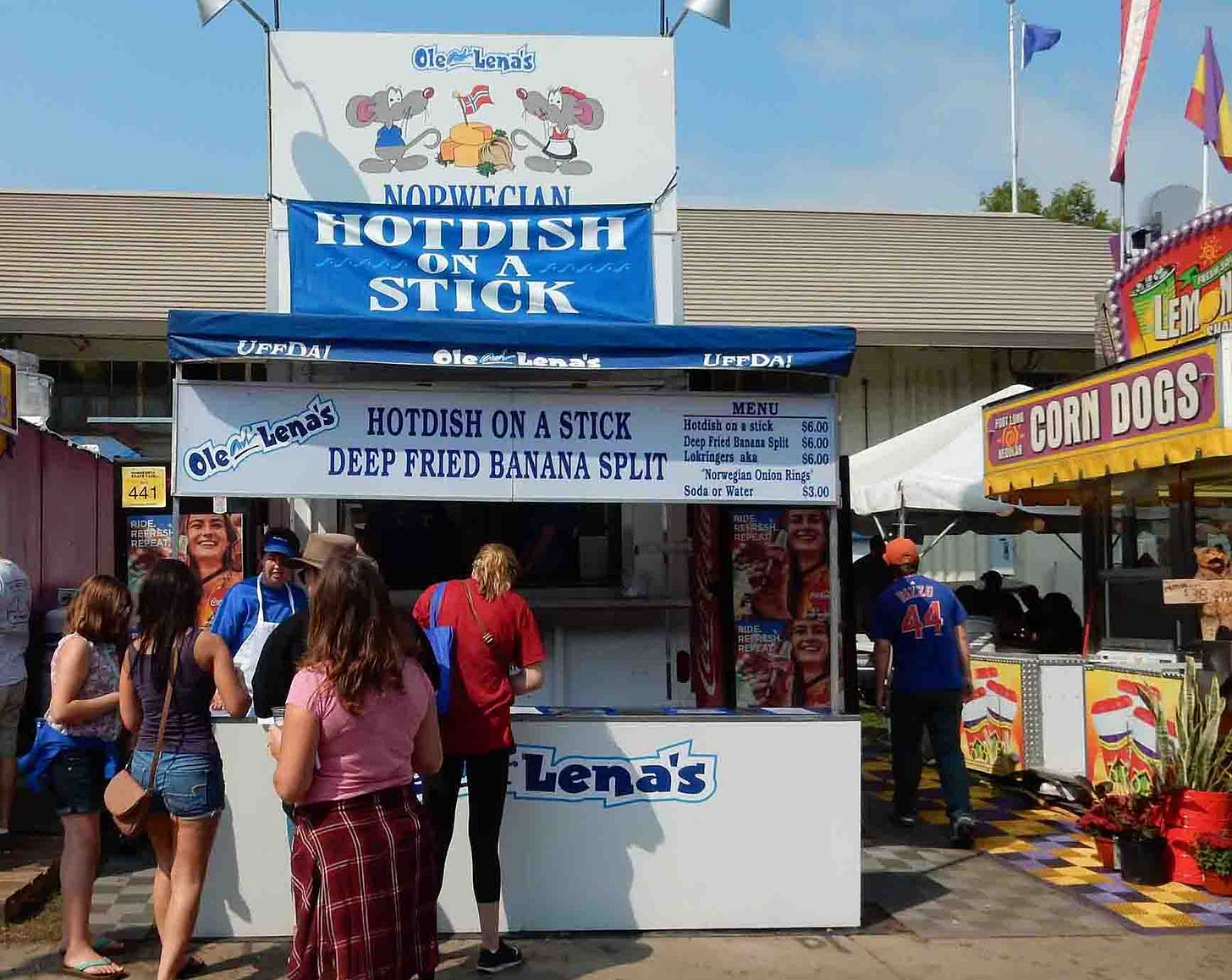
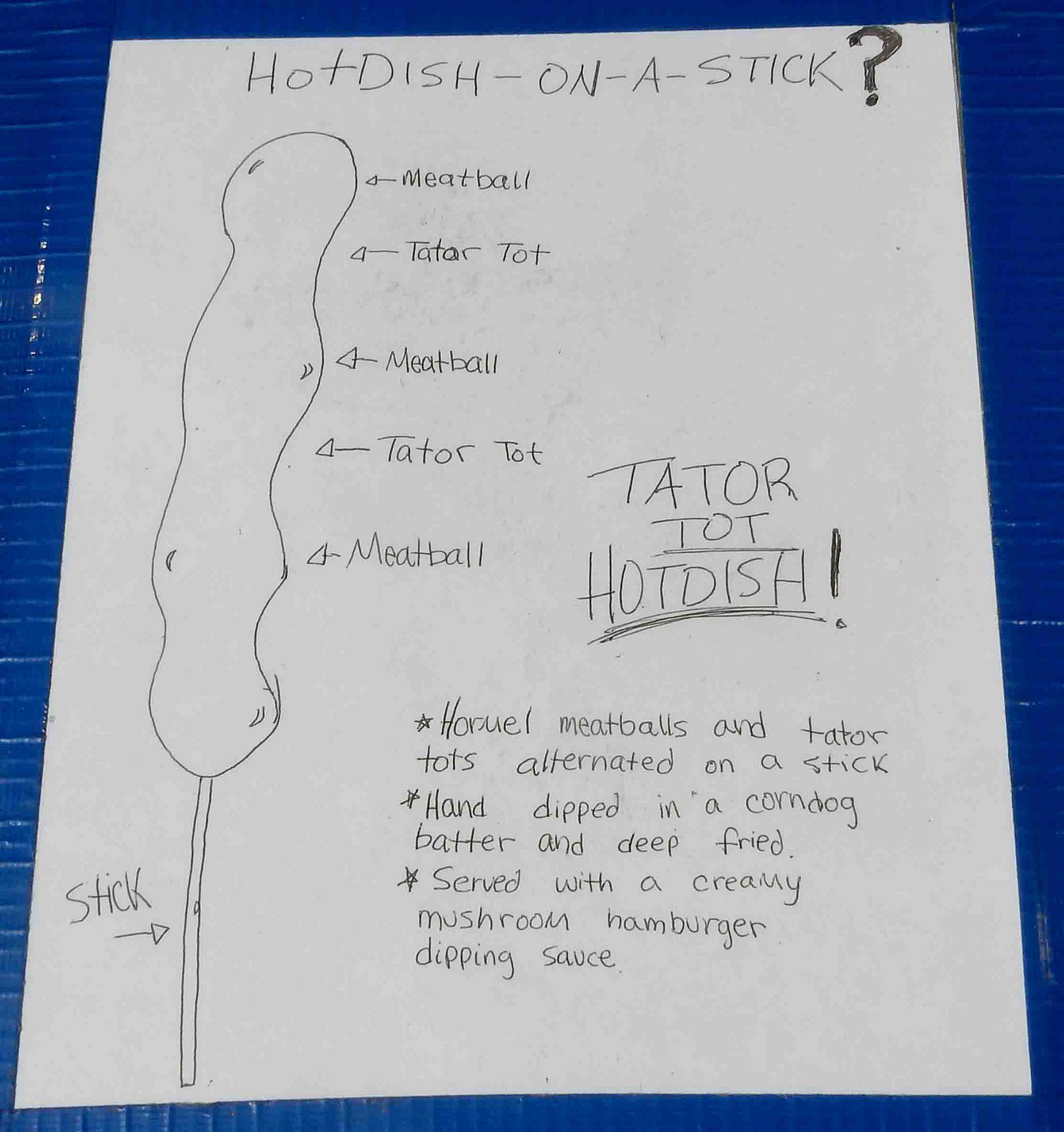
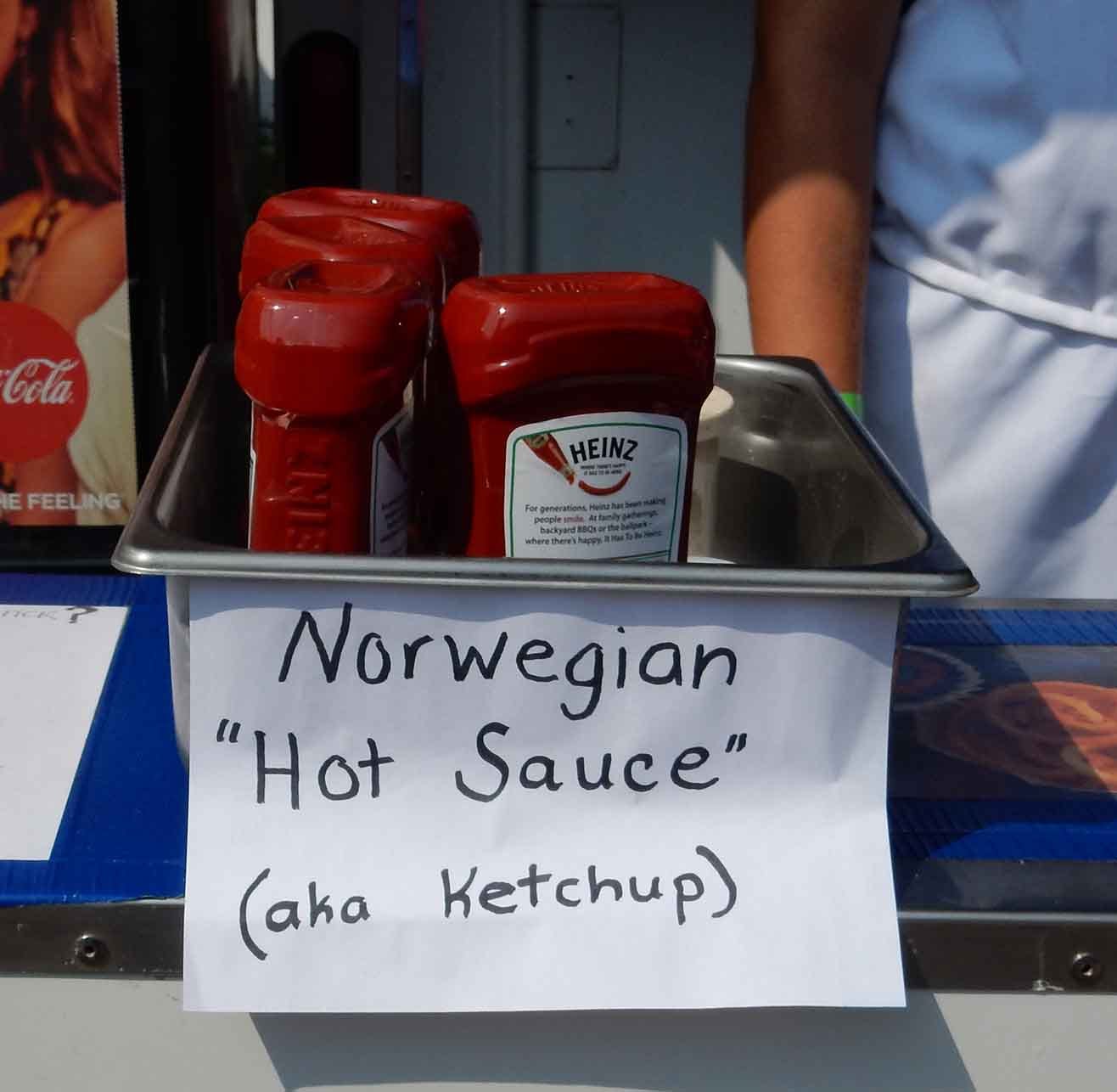
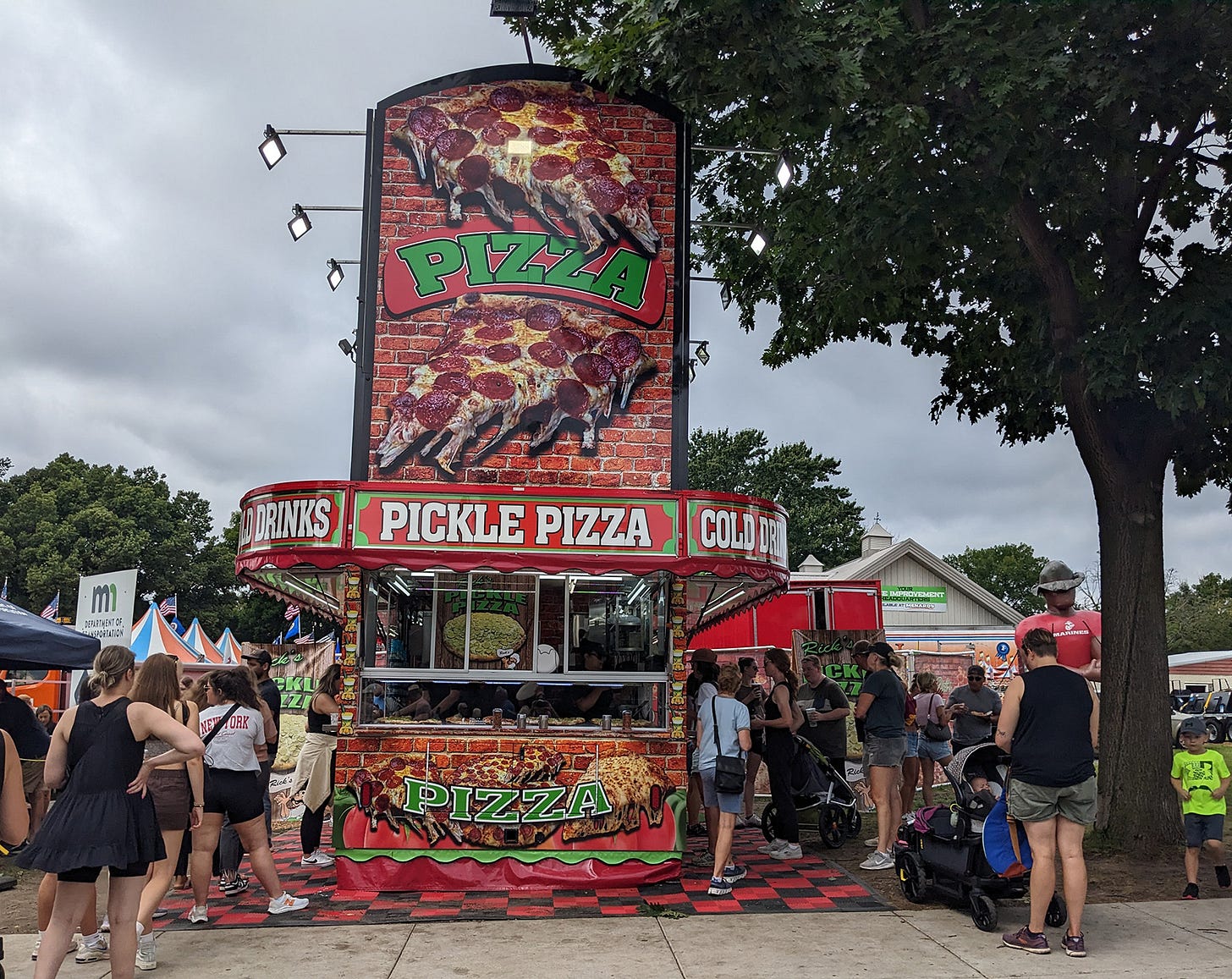
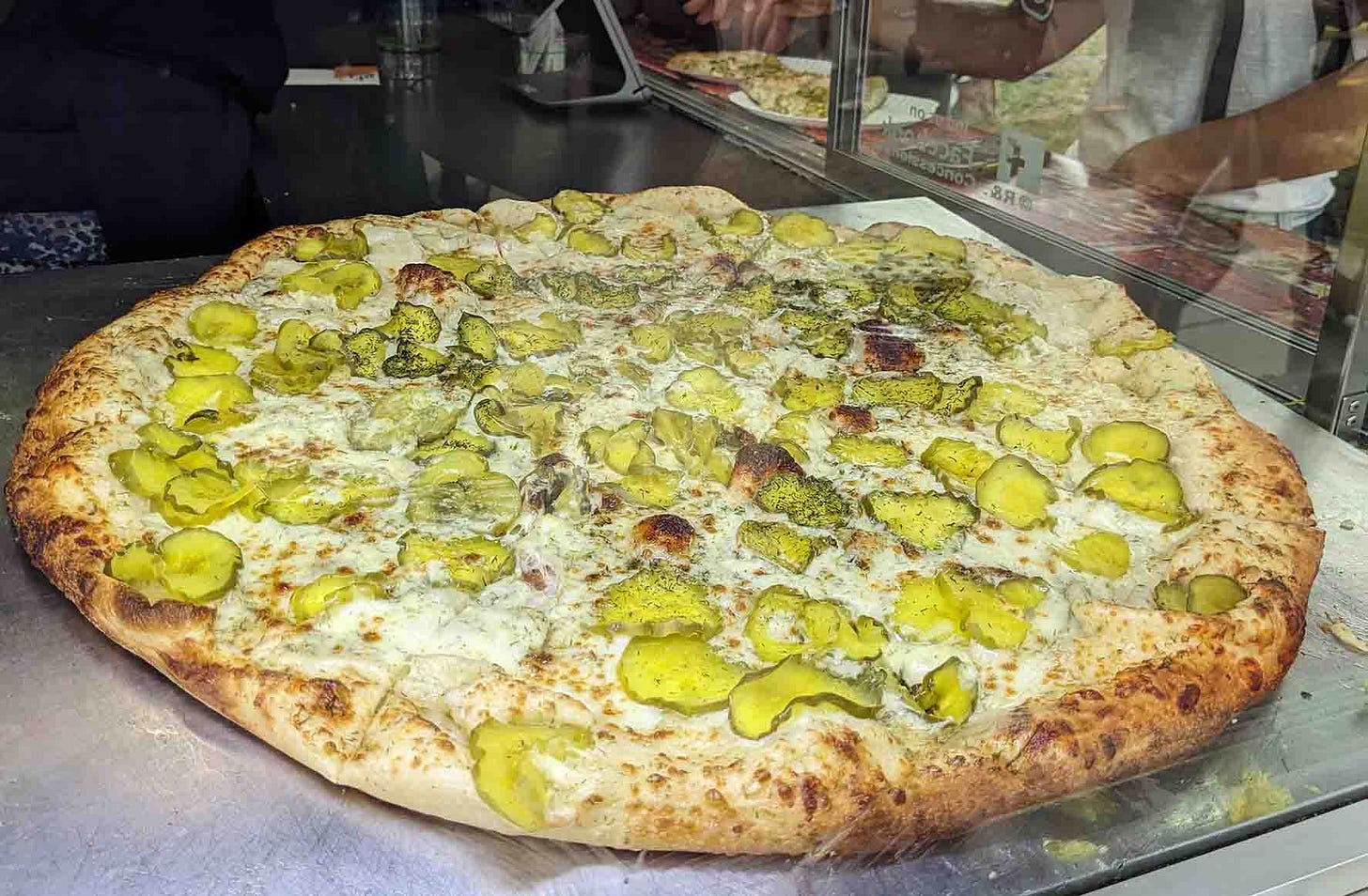
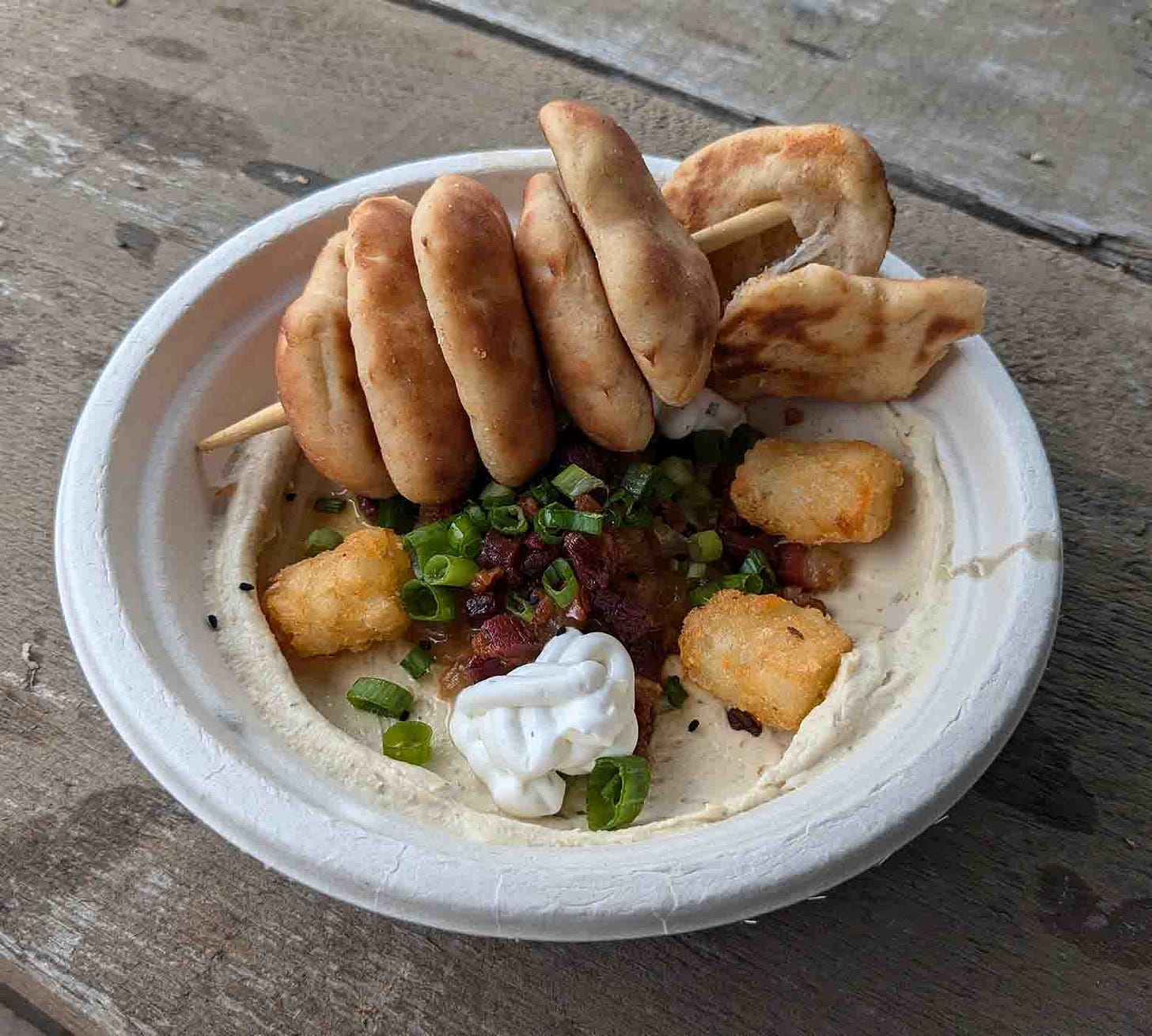
Love the photos! The Minnesota state fair, in case you didn't mention it for your readers, is the #2 in the US for total attendance-- behind only Texas (and theirs runs longer). Some others are much more lightly attended, such as the Upper Penninsula State Fair in Michigan (they have two there) and the Alaska state fair. I worked at the Oregon State Fair hawking cheese in high school and really enjoyed going every day for ten hours! The foods were a big deal even in the 1980s at that much smaller fair.